
Ever curious about how we craft our tales? Or which anecdotes didn't quite make it into the final cut? Sign up for our newsletter for an exclusive look behind the scenes.
The late afternoon sun beams a magical 79 degrees, warm in mid-December even for the desert. A hot air balloon dots the distance ahead, while Camelback Mountain looms just behind, its steep redrock trails and fat boulders no doubt humbling some of the hikers who thought coming down would be easier than going up.
The surrounding mountains are turning purple, the sky pink as the sun sinks. It’s classic Paradise Valley, Arizona — gentle and serene, the reason snowbirds settle in for the season.
Beau Ellington lines up her target 75 yards ahead and positions her ball, feet and hands just so. She winds up her sand wedge and sends the ball sailing as she does. Even the whoosh-bump-crack of her swing is as elegant as the surroundings at Camelback Golf Club, her home course.
Except for one little thing.
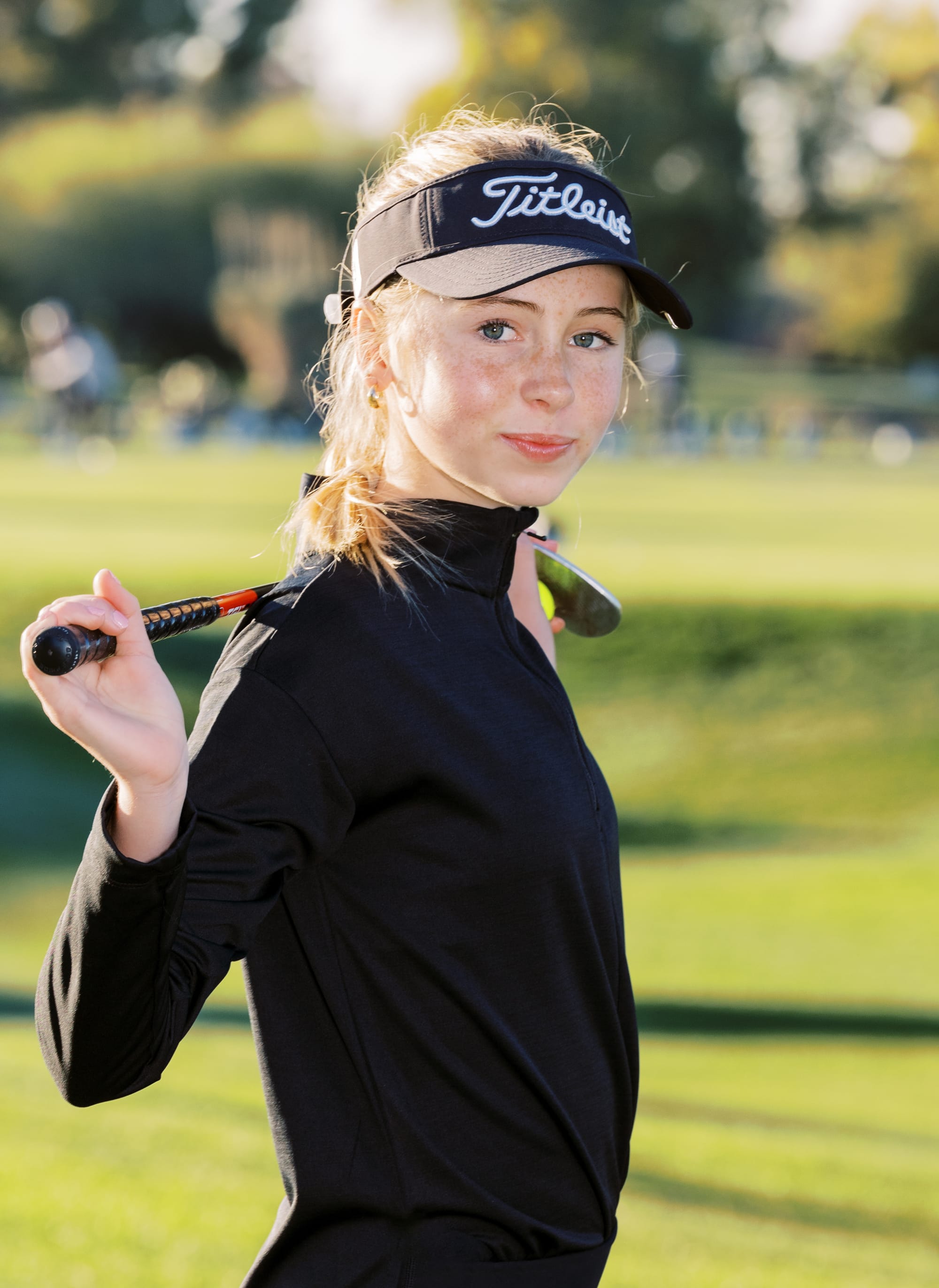
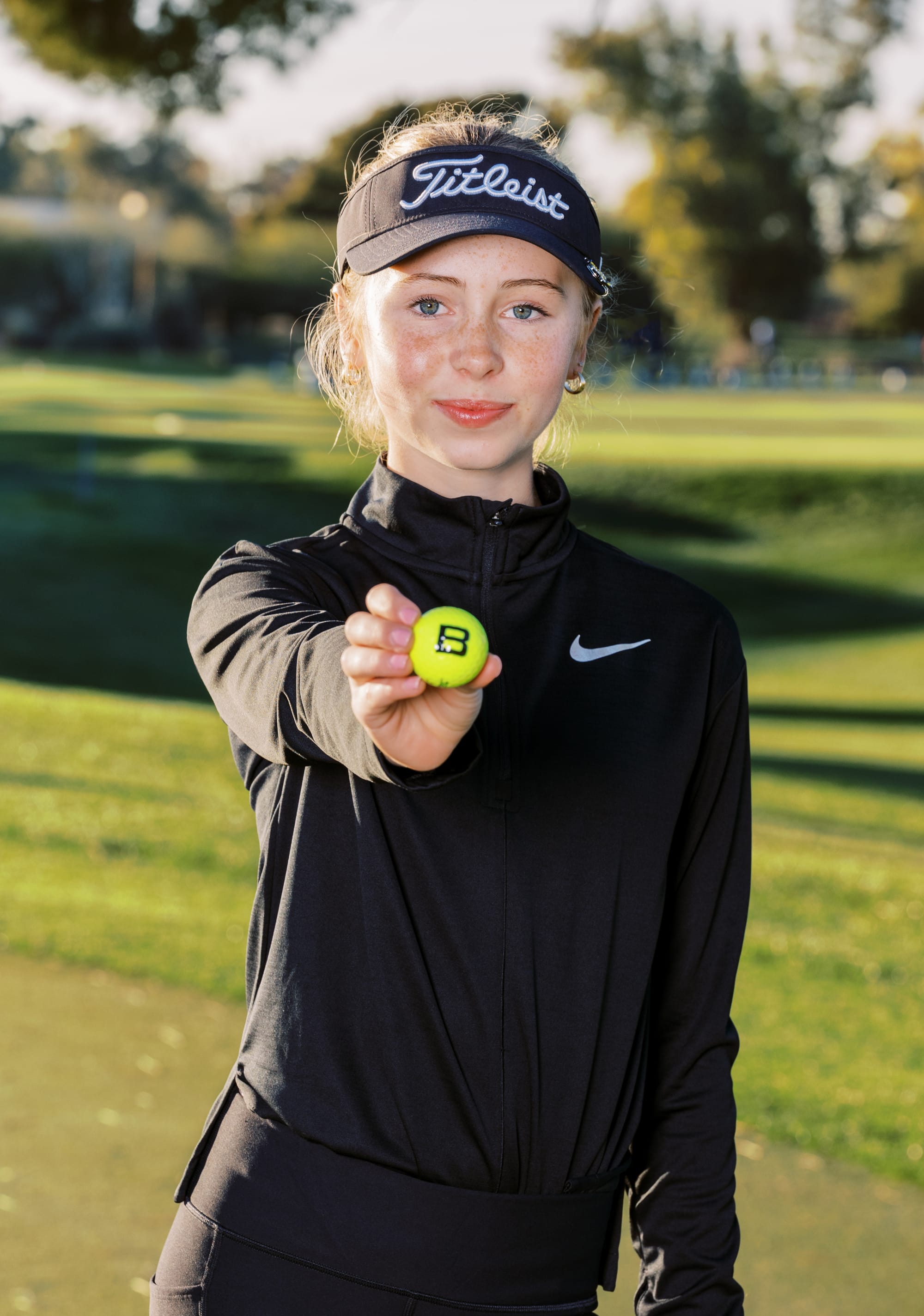
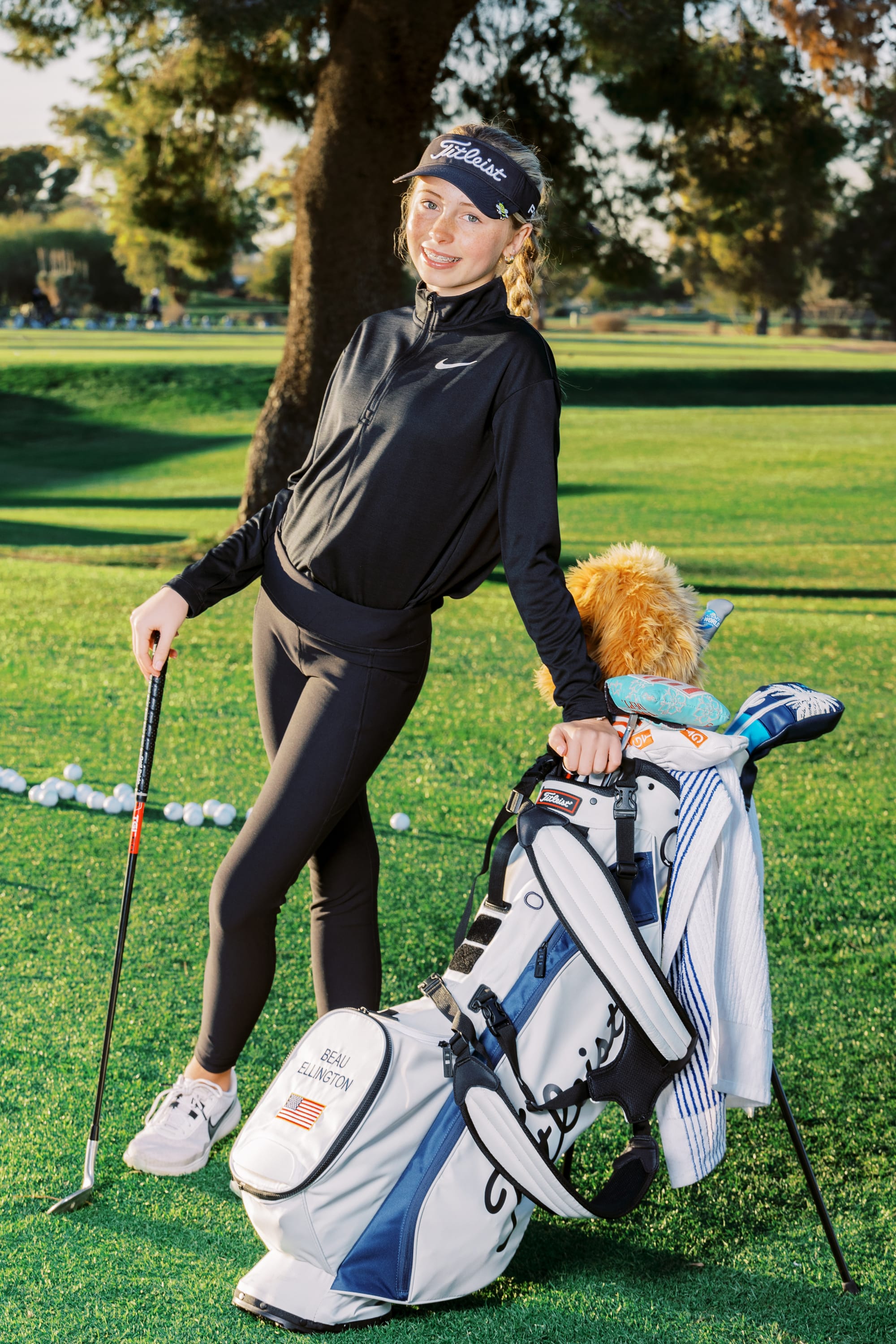
Beau Ellington is your average girl next door, until she steps onto a golf course. [Stephanie Ringleb photos]
“That’s the sound we don’t like, right?” says her coach and caddy, Sean McGovern. The ball flies plenty far — too far, because she bumped the ground just before contact. The dreaded drop-kick.
Unaffected, Beau lines up and drives another ball. A perfect swing with perfect contact for perfect placement.
McGovern smiles: “Nice. See the difference?” Beau goes on to nail drive after drive with the sand wedge, then switches to her go-to 3-wood.
This is Beau’s regular stop after a full day of sixth grade at a private Christian school: an hour or two practicing mechanics, driving balls, maybe playing a couple holes if the day warrants. All in all, she puts in a good 10 to 12 hours a week at the course.
As any parent of a young athlete knows, sometimes there’s a delicate dance between driving excellence and driving antipathy, if not disdain. Between making sure kids are in it for love and fun rather than pleasing their parents. But with five top-five finishes at the U.S. Kids World Championships — including wins at ages 7 and 10 — Beau maintains a steadiness that awes even her mother.
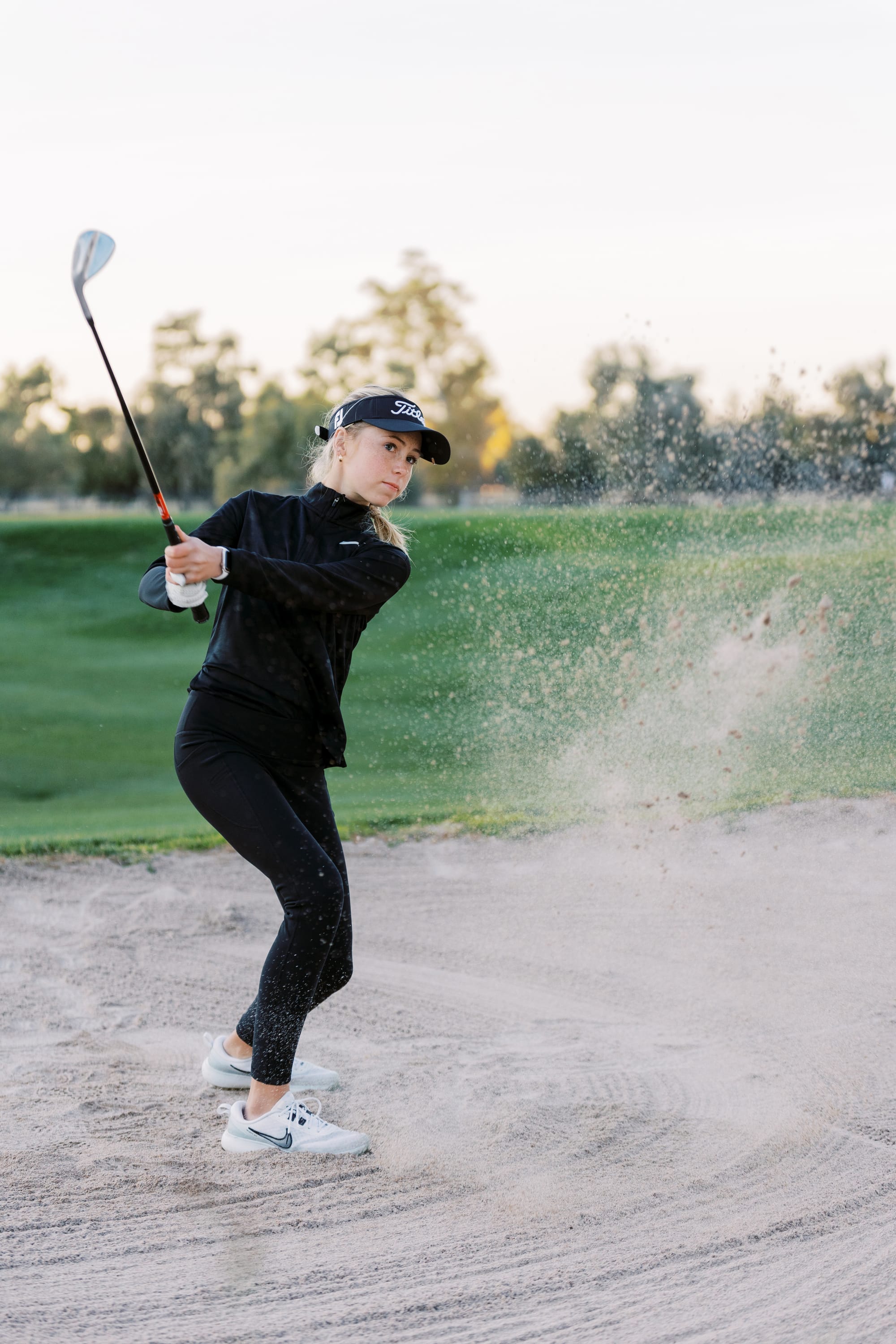
“Whether she gets a birdie or a double bogey, you’re not going to see a change in expression,” Lauren Ellington says. “She doesn’t celebrate, doesn’t get mad. She has no ego. She doesn’t even talk about golf at school.”
Maybe that’s because golf has been as ever-present in her life as, say, food or her faith. Or Taylor Swift. It’s just always been there, starting with the plush golf set she got as a wee one and then the putter specially made by her grandfather, a retired pro, when she was 2. The two of them would go to Camelback to hit the ball around without instruction or agenda.
Well, perhaps a small agenda.
“I loved being outside, loved having fresh air,” Beau says. “We’d always go putt, and then we’d just, if I did good, we’d go get ice cream, even though we’d get ice cream every time.”
She entered her first tournament at six-and-a-half. Then she won her first world championship the following year, finishing even par after three rounds of nine holes at Pinehurst in North Carolina, one of the country’s iconic courses, where, as its website proclaims, “Golf’s History Meets Southern Soul.”
McGovern has been there from the beginning and brings with him an intimate understanding of the training, tournaments and systems that develop young golfers and drive exposure. His daughter, Gracie McGovern, 18, is also a world champion and is 11th in the American Junior Golf Association (AJGA) rankings. She’ll attend Texas Christian University on a full golf scholarship this fall.
Beau considers Gracie her big sister and golf mentor: “It’s made training extra fun and special,” she says. Whoosh.
Sean McGovern tracks the ball and nods his approval as it lands: “Especially now that Beau’s starting to beat her.”
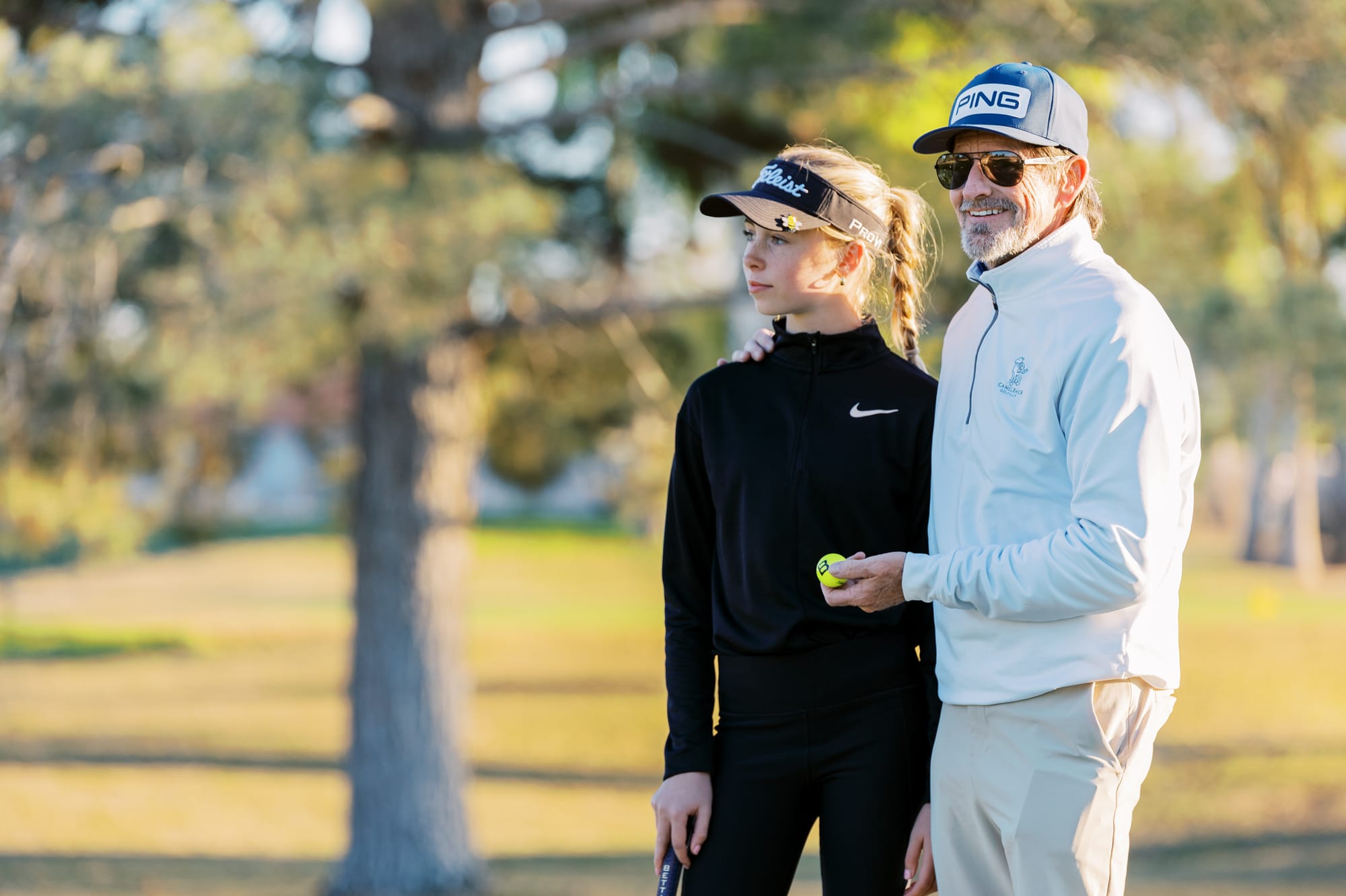
In 2023, Beau won her age group at the Notah Begay III Jr. Golf Regional tournament in Arizona, qualifying her for the Notah Begay III Jr. Golf National Championship at Koasati Pines at Coushatta (Louisiana), where she placed 14th after finishing three rounds at three-over par.
Between those two tournaments, she tied for fourth in the U.S. Kids World Championship, finishing one-under after three rounds, again at Pinehurst.
She’s won putting contests and long-ball contests, too, but she’s quick to repeat a family mantra: “You’re playing to beat the course. Don’t think about what your competitors are doing. Focus on what you’re doing.”
McGovern has seen first-hand just how focused she is. During that first world championship tournament when Beau was just 7 years old, he noticed she was pale and didn’t look well. Sure enough, she threw up at the first hole in the first round.
“I told her we have to withdraw, and she said no, no, no. She threw up in the weeds two more times but then was smiling for pictures afterward. She didn’t get a drop on her.”
Beau remembers the culprit well: “It was the peaches.”
But she won and was a world champion as a second-grader.
The sun’s now low behind Camelback Mountain, and Beau decides to squeeze in a couple of holes before dark. She makes quick work of the 8th, 98 feet away according to her distance meter, and moves on to the 9th, where palm trees silhouette the far side, and water cascades over nearby rocks.
“Good swing, just taking the long way,” McGovern teases. Beau gets better placement on her next try, and she and McGovern make their way to the green to plan her next shot.
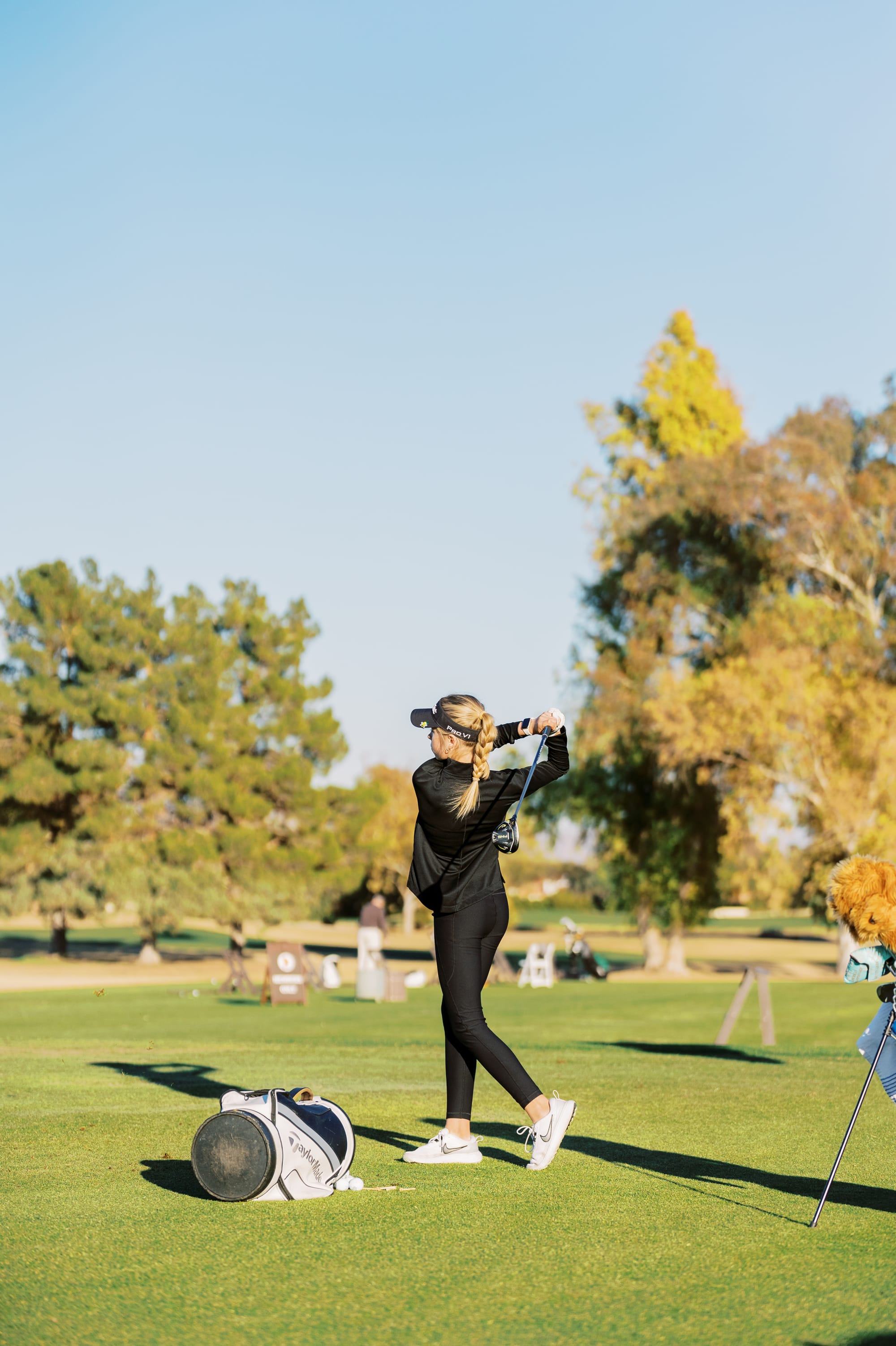
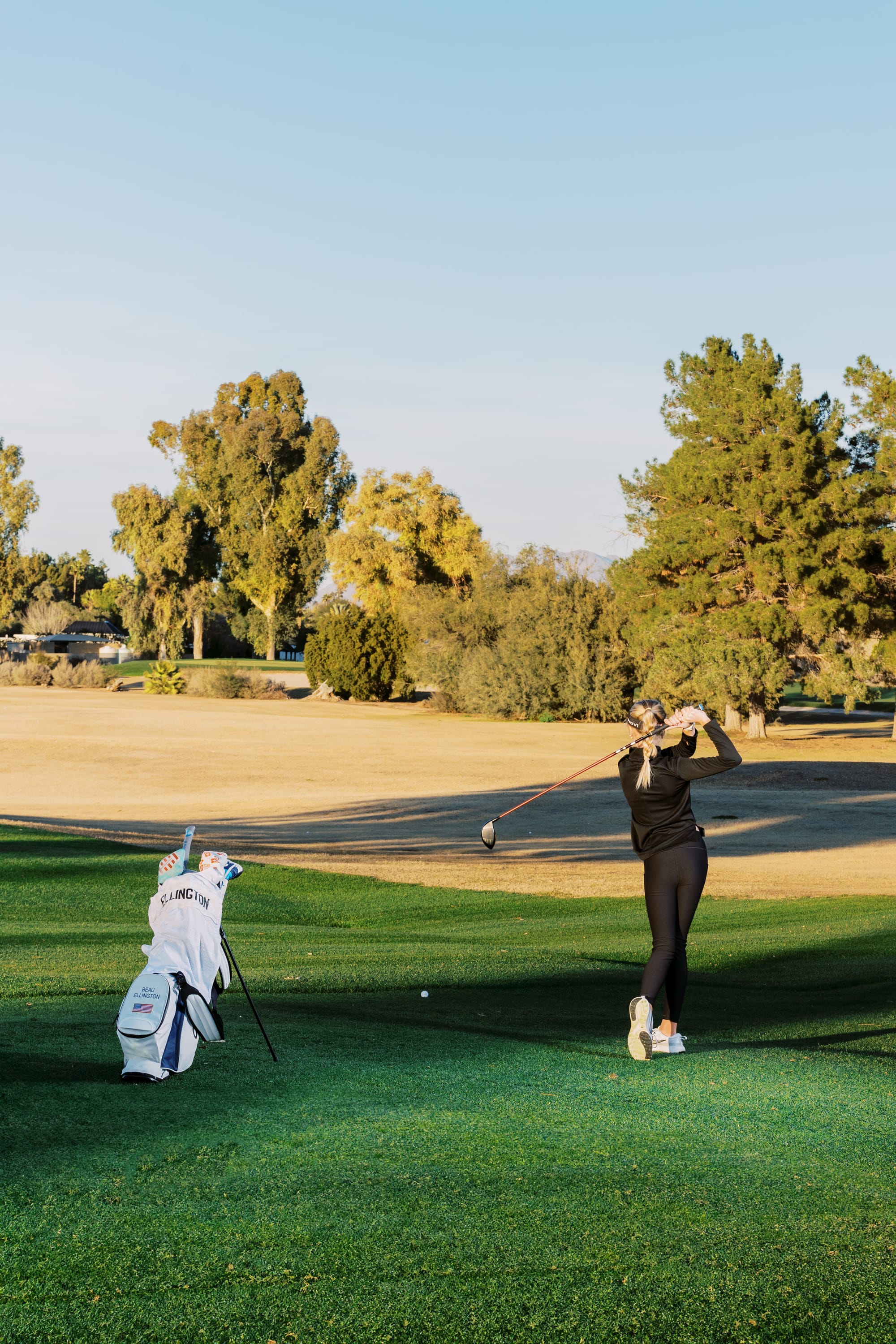
Practice makes perfect. Beau Ellington feels at home on the course. [Stephanie Ringleb photos]
“Use the front of the green, and hop hop. A little left of the green, not too much spin, then a good 6-footer for birdie.”
Indeed.
They return the cart, McGovern tips the cart attendant, and he and the Ellingtons say their goodbyes for the day. It’s 5:35 p.m. now, and … time to head home? Not just yet.
Lauren drops Beau off at Cattle Track Arts Compound, a 13-acre artist colony that opened in the 1930s in what is now Scottsdale. Cattle Track is home to all kinds of artists — sculptors, photographers, fiber artists, painters — each with their own standalone studio space in what looks like old stables, cabins and farm buildings.
Beau walks up to one of them and sits outside on one of the antique metal tractor seats that serve as a waiting area. A soft glow and men’s voices filter through the open door.
“Come on in,” Doug Mann says after a few minutes. “Grab a couple chairs while we finish up.”
Guitar cases and gear are strewn about the rugs, and plank wood walls and ceilings warm the room, lit by a guitar-shaped lamp with musical notation lining the shade. You can almost see the horses that might have poked their heads outside the Dutch doors on the left and right sides of the space.
Mann is working with a local band that’s rehearsing for holiday gigs, coaching the two guitarists and keyboardist through CCR’s Who’ll Stop The Rain before running through the final song of practice: a wavy, lounge-y Blue Bossa. Beau watches and listens as she waits for their lesson to end and hers to begin.
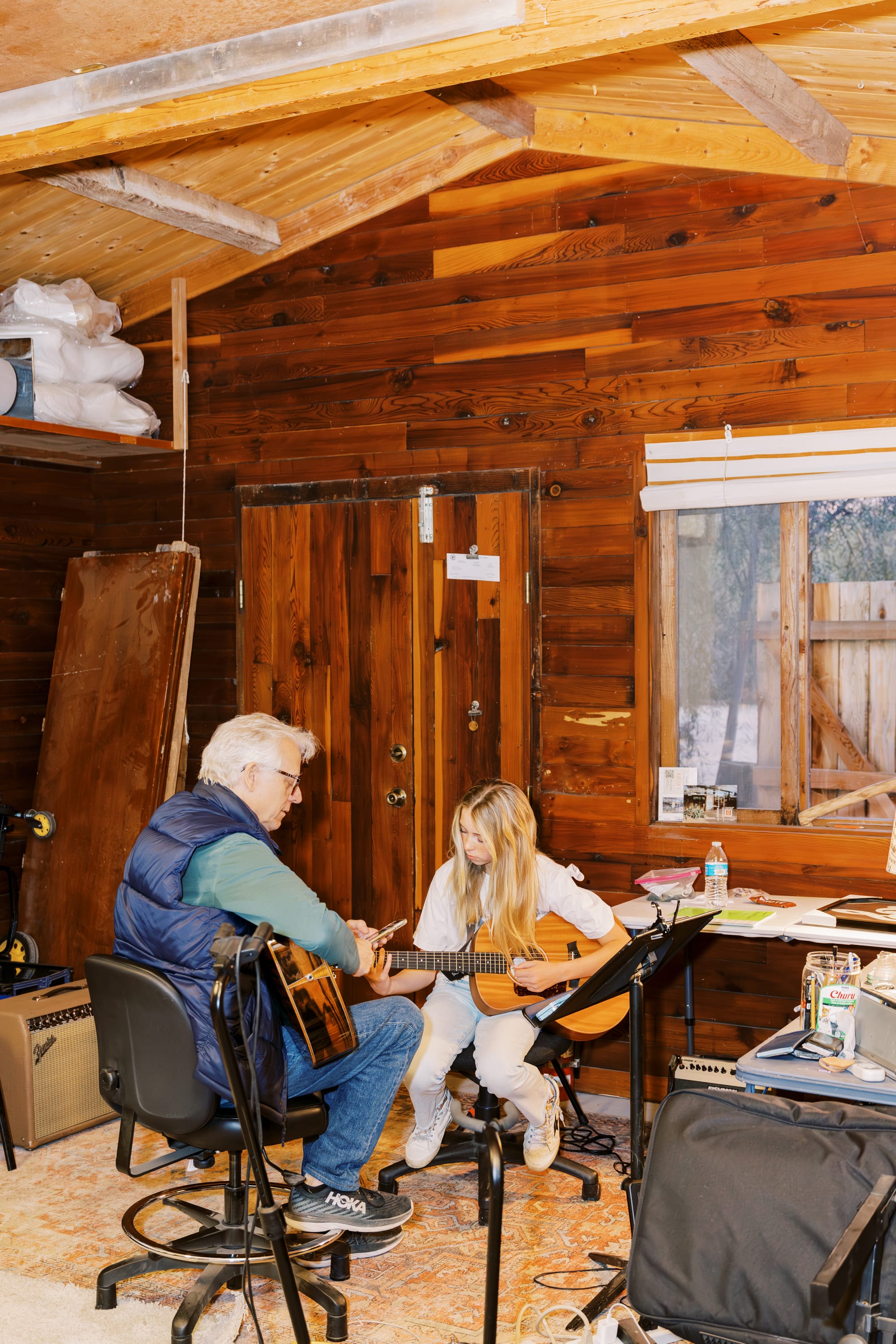
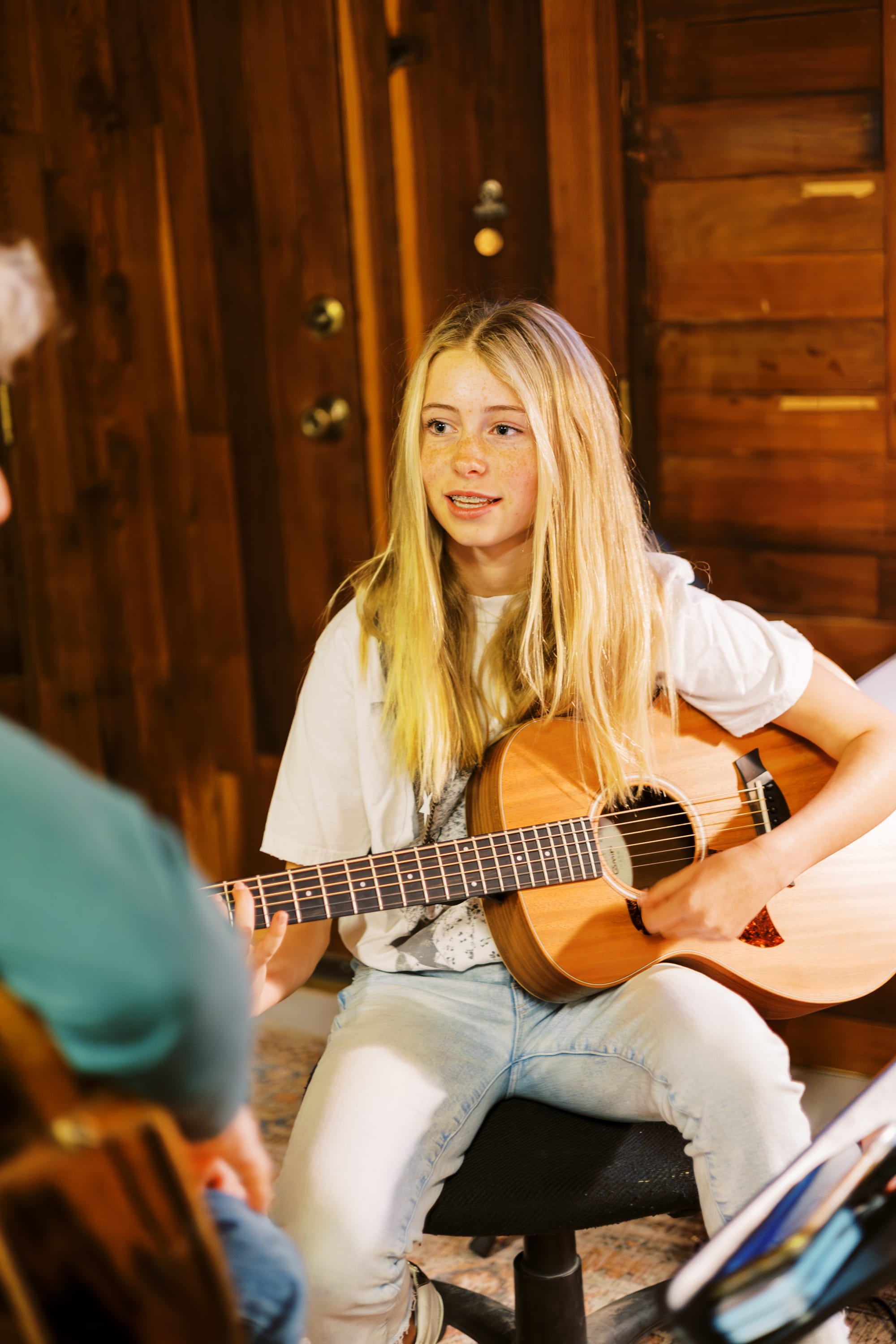
Seeking balance, Beau has another passion she's exploring. [Stephanie Ringleb photos]
As the guys pack up their gear, Mann pulls out his phone to play the video Lauren sent of Beau singing Leonard Cohen’s Hallelujah, a song she’ll sing as part of a duet during her school’s nativity performance. Beau started guitar lessons a year ago, but on this night, she’s here to learn the song on guitar not because she’ll be playing one during the show but because she just wants to learn it.
And she’s learning it from Mann, an Arizona institution who in his early days toured with acts from RCA record company.
He levels with her: It’s going to be tough to switch between G and C chords because of how the ring and middle fingers need to maneuver. She works at it and starts to get the hang of it, then trips up at the same spot with each pass.

“Technically could I do this?” she asks, keeping her middle finger on the top string and ring finger on the second string — an easier reach.
Mann shakes his head and is about to explain why, but Beau beats him to it: “Oh. Because it’s a different fret.”
She’s a good student and has natural ability that could be developed, he says, but as with even the most talented musicians, it would require hours and hours of additional practice.
“It’s the bubble that bursts most people’s dreams,” he says. “As long as you’re having fun with it, that’s the main thing.”
She is. There are Taylor Swift songs to learn, after all, Our Song and Lover being the current pursuits. But the hours and hours of practice? That’s for the course. She’ll continue to put the work in and take her sport one day at a time, one course at a time, one drive at a time, and see where it takes her. Even with so much early success, she knows nothing’s a given.
“I want to play for a great D-I college if I’m good enough.”
Advertising and sponsorship opportunities are available. Contact Jim Hoos at jhoos@r1s1sports.com or 602-525-1363.